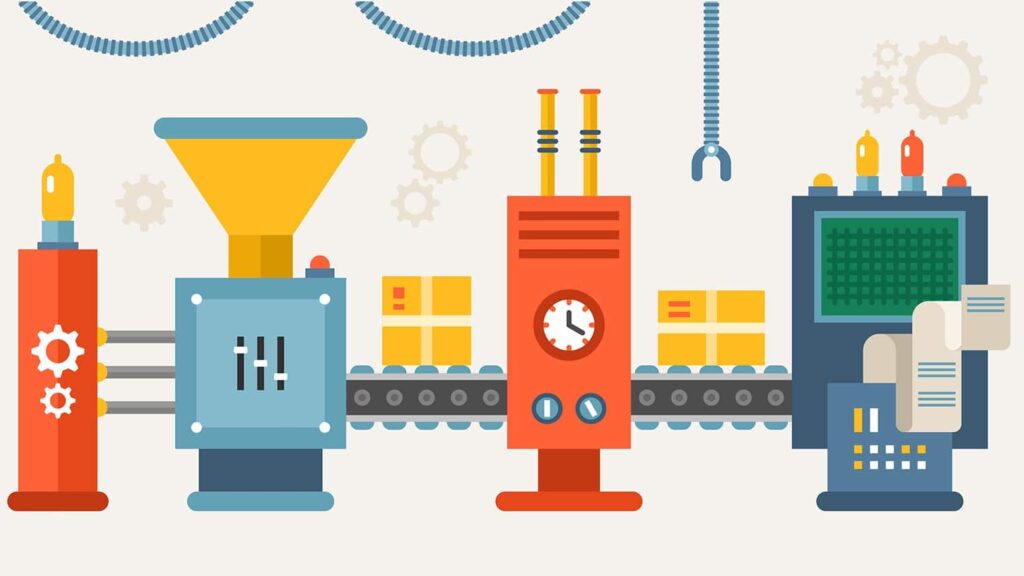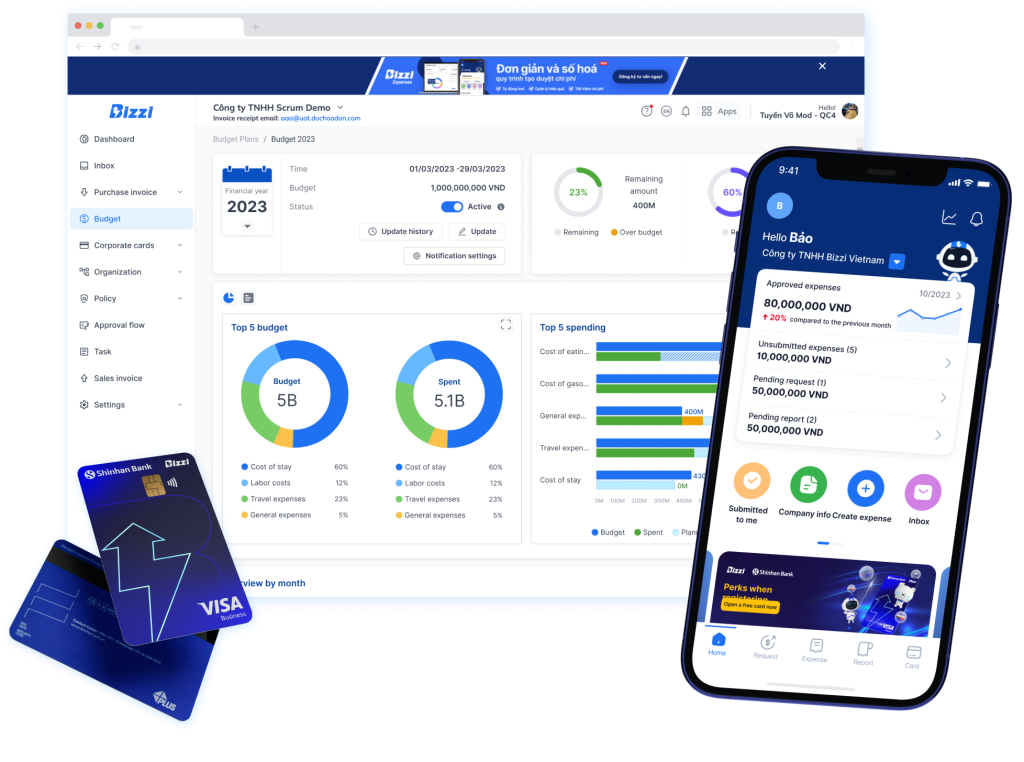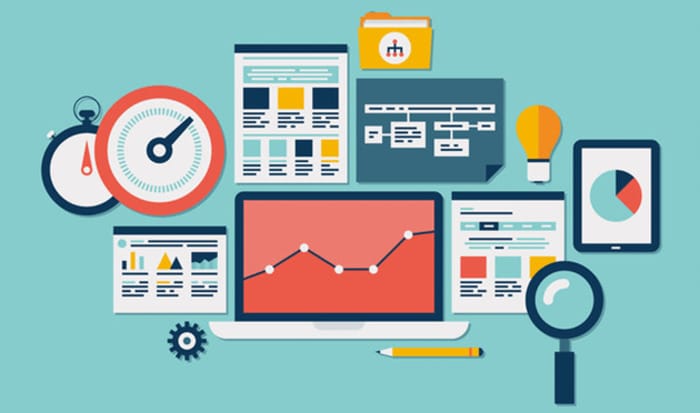General manufacturing costs accounts for a large proportion of total production costs, so controlling these costs well will help businesses reduce product costs, thereby increasing profits and competitiveness.
This article by Bizzi will help you better understand what general manufacturing costs are, their classification, role and how to account for account 627 most accurately.
What is the concept of manufacturing overhead?
Definition of manufacturing overhead by Circular 200/2014/TT-BTC is cGeneral production and business costs incurred in workshops, departments, teams, and construction sites. Not including direct material costs, direct labor costs, and construction machinery costs. General manufacturing costs are difficult to determine directly for each product. → must be allocated indirectly, that is why accountants must calculate carefully and reasonably to avoid cost deviation.
– The role of general production costs:
- Important factors product cost structure, goods, services
- Important basis for determining cost of goods sold and business profit
- Help businesses make effective business decisions.
– Scope of application:
- Only used in industrial production, agriculture, forestry, fishery, basic construction, transportation, post, tourism, and service enterprises.
- Not for commercial use.
– Distinguish between general production costs, business management costs and sales costs:
- Production costs directly participate in the production process to create goods and services, are included in the price of goods in stock, and when sold, will be converted into cost of goods.
- Administrative and selling expenses are not directly involved in the production process.
- The scope of production cost incurred only includes costs arising in workshops and factories.
- The scope of arising of business management costs and sales costs is the entire business or sales department, business management department.
For example: Office rental costs for the production team are production costs, while office rental costs for the accounting team, human resources, board of directors, etc. are business management costs.

Classification of general manufacturing costs
– Fixed general production costs:
Fixed manufacturing overhead are indirect costs that do not change with the number of products produced, including: machinery depreciation, factory management salaries, factory rental costs, etc. This cost affected by mechanical wear and tear over time.
- For example: Fixed asset depreciation costs, maintenance costs machinery and equipment, factory, administrative management costs in workshops, departments, teams, production teams.
- Allocation method: Based on normal capacity of production machinery.
If actual product > normal capacity: Allocate according to actual costs incurred.
If actual product < normal capacity: Allocate according to normal capacity, unallocated portion is recorded in cost of goods sold in the period.
– Variable general manufacturing costs:
Are indirect costs that vary directly or almost directly with the quantity of products produced.
- For example: Raw material costs, indirect materials, indirect labor costs.
- Allocation method: Allocate all processing costs for each product unit according to actual costs incurred.
What are the general manufacturing cost items?
– Factory staff costs:
- Salary, allowances, and mid-shift meal allowances for workshop and production department managers.
- Salary deductions (social insurance, health insurance, union contributions, unemployment insurance).
– Material costs:
- Materials used to repair and maintain fixed assets, tools and equipment under the management and use of the workshop.
- Temporary shelter costs.
– Cost of production tools:
- Cost of tools and equipment used for management activities of workshops, departments, teams, and production groups.
- Fixed asset depreciation costs: Depreciation of fixed assets used directly for product manufacturing and service provision; Fixed assets used for the operation of workshops, departments, teams, and production groups.
– Outsourcing service costs (Regarding outsourcing service costs)
- Repair costs, outsourcing costs.
- Electricity, water, telephone, internet costs.
- Fixed asset rental, costs paid to subcontractors (for construction and installation enterprises).
– Other cash expenses:
- Reception and notary fees.
- Cash costs other than the above-mentioned costs serve the operations of the workshop, department, team, and production group.
Accounting accounts used
– Account 627 – General production costs:
- This account no ending balance.
- Detailed accounting for each workshop, department, team, and production group.
- Must be accounted for in detail according to 2 types: Fixed general production costs and variable general production costs.
– Level 2 accounts of account 627:
- 6271 – Factory staff costs.
- 6272 – Material costs.
- 6273 – Cost of production tools.
- 6274 – Fixed asset depreciation expenses.
- 6277 – Outsourced service costs.
- 6278 – Other cash expenses.
– Formula for calculating general production costs:
Production cost = Factory staff cost + Material cost + Production equipment cost + Fixed asset depreciation cost + Outsourced service cost + Other cash costs.
Important Note:
- CPSXC can be allocated to each product and order according to appropriate criteria (labor hours, machine hours, output...).
- In commercial enterprise, account 627 less used, instead 641 – Selling expenses and 642 – Business management costs.
How to account for account 627 - general production costs
– Employee cost accounting:
- Debit account 6271/Credit account 334 (salary, wages, allowances).
- Debit account 6271/Credit account 338 (salary deductions).
– Material cost accounting:
- Debit account 6272/Credit account 152 (export of shared materials).
- Debit account 6273/Credit account 153 (export of small value tools and equipment).
- Debit account 242/Credit account 153 (export of high value tools and equipment).
- Debit account 6273/Credit account 242 (allocation of tool and equipment value).
– Accounting for depreciation costs:
- Debit account 6274/Credit account 214 (fixed asset depreciation).
– Accounting for outsourced service costs:
- Debit account 6278, Debit account 133/Credit account 111, 112, 331 (electricity, water, telephone costs,...).
– Accounting for prepaid expenses:
- Debit account 2413, Debit account 133/Credit account 331, 111, 112 (actually incurred major repair costs of fixed assets).
- Debit account 242, 352/Credit account 2413 (cost of major repair of completed fixed assets).
- Debit account 6273/Credit account 352, 242 (pre-deduct or gradually allocate major repair costs of fixed assets).
– Accounting for leased fixed assets costs:
- Debit account 627, Debit account 133/Credit account 111, 112, 331 (initial direct costs related to operating lease).
- Debit account 627/Credit account 214 (depreciation of fixed assets for operating lease).
– Accounting for incurred costs payable for construction warranty:
- Debit account 627/Credit account 352 (determine the amount of provisions payable).
- Debit accounts 621, 622, 623, 627/Credit accounts 111, 112, 152, 214, 331 (repair and warranty costs of construction works)
- Debit account 154/Credit account 621, 622, 623, 627 (transfer of repair and warranty costs for construction works).
- Debit account 352/Credit account 154 (repair and warranty of completed construction works).
– Accounting for borrowing costs payable and break-even:
- Debit account 627/Credit account 111, 112, 242, 335, 343 (interest on loans payable, paid and capitalized).
– Accounting for production cost reductions:
- Debit account 111, 112, 138/Credit account 627.
– Accounting for production costs used for business cooperation contracts:
- Debit account 627, Debit account 133/Credit account 111, 112, 331 (incurred expenses).
- Debit account 138/Credit account 627, Credit account 3331 (cost allocation).
– Final accounting:
- Enterprises regularly declare: Debit account 154, Debit account 632/Credit account 627.
- Periodic inventory business: Debit account 631, Debit account 632/Credit account 627.
Methods of allocating manufacturing overhead costs
Manufacturing overhead (CPSXC) is an indirect cost, not associated with a specific product, so need rational allocation into price for accurate calculation. Below are common methods of allocating general manufacturing costs according to each type of business:
– Single-piece, order-based manufacturing businesses
- Direct labor hour allocation method: Applicable when manufacturing overhead costs are primarily related to labor.
- Allocation method based on direct material cost: Suitable when raw materials account for a large proportion of the cost.
– Mass production and continuous production enterprises
- Product output allocation method: Applicable when the products are homogeneous and the CPSXC is evenly distributed over quantity.
- Machine hour allocation method: Suitable for businesses with continuously operating machinery systems, general production costs are mainly depreciation and maintenance costs.
– Service business
- Allocation method based on service revenue: Applicable when costs are incurred primarily to serve business operations.
- Allocation method based on employee working hours: Suitable for consulting, financial services, auditing businesses...

How to cut and optimize overall production costs
In the era of strong technological development, businesses can take advantage of modern technologies and smart management strategies to reduce overhead (CPSXC) without affecting product quality.
So what are the ways to cut and optimize? What is manufacturing overhead?? Find out below:
– Automation and digitalization of production processes and machinery
- Using automatic machines and robots to replace indirect labor → Reducing factory management staff
- Applying IoT (Internet of Things) to monitor machinery helps with timely maintenance and reduces repair costs.
- ERP Software (Enterprise Resource Planning) to manage production data, materials, human resources, and finances to help optimize operations.
– Integrating AI & Big Data in general production cost management
- Predict and optimize energy costs, reduce electricity and water consumption
- Optimize supply chain, help businesses order at the right time to reduce inventory.
– Application of warehouse management technology (WMS – Warehouse Management System)
- Helps to accurately control the amount of raw materials, avoiding loss and surplus.
- Apply Just-in-Time (JIT) method to reduce inventory.
– Apply Lean Manufacturing to optimize overall production costs
- Eliminate redundant steps in production
- Reduce waiting time, optimize production process
– Smart energy usage (EMS – Energy Management System)
- Monitor and optimize electricity, water, gas consumption
- Switch to renewable energy like solar power to reduce long-term costs.
Summary of technologies to be applied to:
- ERP & AI – Data management, cost forecasting
- IoT & Big Data – Production monitoring, energy optimization
- Lean Manufacturing – Eliminate waste, optimize processes
- Predictive Maintenance – Reduce maintenance costs
- Just-in-Time (JIT) – Optimize raw materials, reduce inventory.
What is manufacturing overhead in management accounting?
– Reasonable product pricing: General production costs are an important factor in product cost, helping businesses set reasonable selling prices.
– Support the production process: Provides a basis for making decisions about product production, quantity, and timing to optimize profits.
– Performance and efficiency assessment: Reflects production performance, helps businesses detect waste and save costs.
– Support investment decisions: Evaluate the feasibility and effectiveness of new projects or production expansion.
– Effective budget planning:Basis for budget planning related to general production activities.
– Provide information for management reports: Shown in important management reports such as income statements and cost management reports.
– Comparison between management accounting and conventional accounting:
- Scope of review: Management accounting looks at details and classifies them according to specific activities, departments or products and services. Conventional accounting may summarize them into general accounts without classifying them in detail.
- Purpose of information use: Management accounting is used to effectively manage and optimize production operations, make pricing and product decisions. Conventional accounting is used to calculate product costs and financial statements.
Contact Bizzi for effective production cost control
Effective management of overhead costs requires long-term planning, close monitoring and the application of technology. If optimized well, businesses can reduce product costs, increase profits while maintaining quality.
Technology is the key to streamlining and automating the process. business cost management, contributing to sustainable success in today's competitive landscape. Bizzi is a comprehensive cost management platform, the leading solution chosen by talented leaders.

Bizzi Expense is a trusted partner of businesses such as MASAN Group, kewpie, Pierre Fabre with many outstanding advantages such as:
- Automate all processes, minimize time spent gathering documents and making payment requests
- Reconcile and manage costs against policies and budgets in real time
- Save and optimize time and costs on human resources and materials.
- Intuitive and user-friendly interface, making it easy to record, track and manage expenses
- Support anytime, anywhere, design and optimize the system based on business needs
Ready to take control of your business finances? Schedule a demo with Bizzi today and discover how our innovative solutions can help you navigate the complexities of manufacturing overhead management with ease.
- Contact Bizzi now to learn about the ability to digitize and automate revenue and expenditure transactions for your business: https://bizzi.vn/dang-ky-dung-thu/
Read more:


